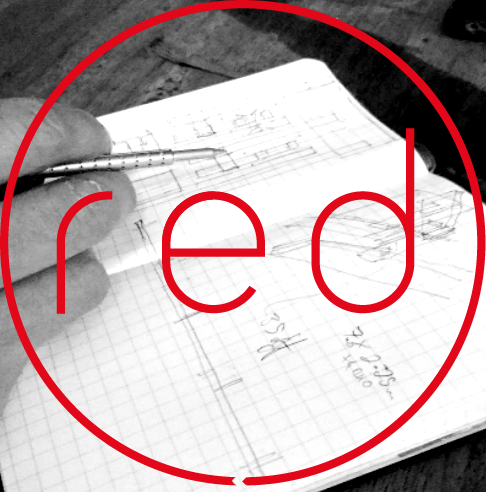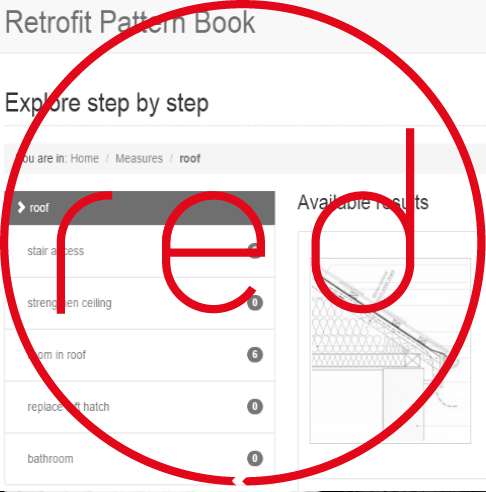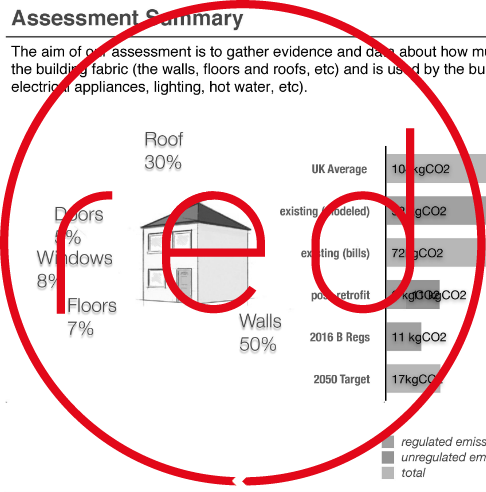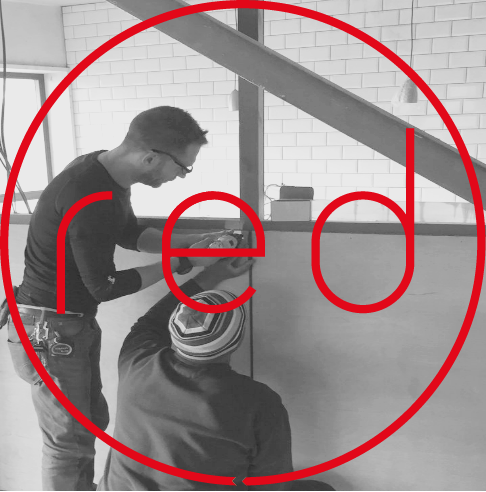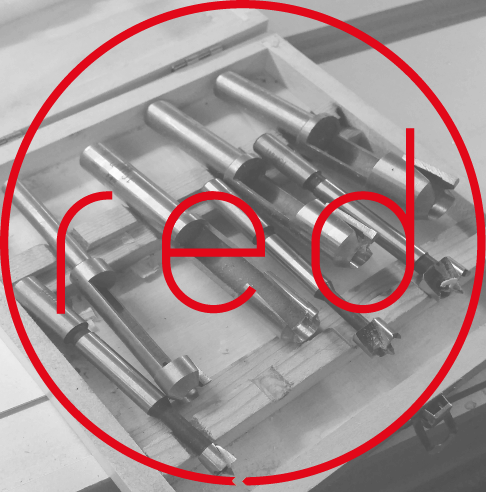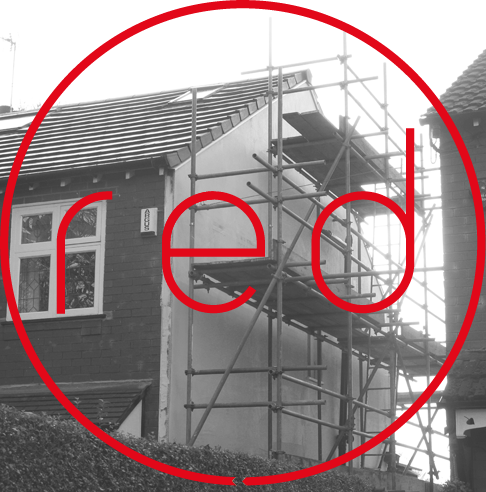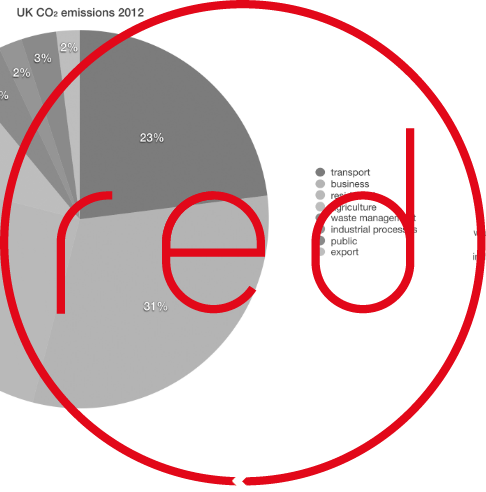NWRCA 2017 Awards full submission
Background - Describe the circumstances, or challenges faced in relation to this entry:
Retrofitting insulation and renewable energy generation to existing buildings is complex and often fails to achieve the designed performance or fails to seize the opportunities available to improve the design of buildings.
We wanted to improve achievement within the retrofit sector by bringing together all of the elements of a retrofit project, from technical assessment of the current and potential energy needs, to design of both retrofit details and the major building elements which often trigger building work, to working on site and sharing the knowledge gained afterwards in a cycle of improvement for all working in the field, not just our company.
Our solution was to create a company that could carry out all elements, including:
Developed a Whole House assessment system based on SAP building performance analysis which has then been linked to real costings to enable the designer to value engineer the best outcomes without tender cost rises
Research and design of optimal details for retrofit, made available to all through the Retrofit Pattern Book and used/refined on site
Design to take advantage of opportunities to improve the look of buildings and make retrofit desirable not just functional
Direct contracting, enabling discussion between trades and designers to get the best outcomes and facilitate adaption on site with no contractual charges
Design to use leftover materials to minimise waste and create new items such as furniture. This makes retrofit aspirational - about what you can have, rather than what you must give up.
How was the need and your solution evaluated and with whom?
Homes produce 30% of UK emissions and improvements to emissions reduction trajectories are urgently required. The considerable evidence of the contribution made by consumer engagement in reducing CO₂ emissions supports a view that a considered, scaleable entry into domestic retrofit will both tackle that 30% and educate consumers to make and ask for other changes.
There is much evidence of a performance gap between designed and outturn energy use in retrofit projects which needs to be resolved. There is further evidence that contractors left to their own devices are developing industry custom and practice which is storing up potentially huge problems for the future as a result of poor detailing.
While Red Co-operative was providing technical advice to GMCA for 2000 installations for their award winning Green Deal Communities programme, the number of installations we inspected which demonstrated considerable future damp and underperformance risks reinforced the idea that this is a substantial problem.
However the current traditional functional or contractual arrangements for the involvement of an architect do not fit at all well with the many unforeseens of retrofit or the need for a collaborative approach. The work we did on the Green Deal Go Early project was successful in generating high demand among ‘pioneers’ for retrofit by demonstrating the potential benefits to householders using our Whole House Assessment method. Compared to the near complete failure of the Green Deal this demonstrated that a properly calculated tailored approach was more attractive to householders.
How were targeted benefits demonstrated and has it led to more applications?
We have developed a Whole House Assessment report which includes full measurements of the property and details of existing construction and services and produces a SAP model of the house. This detailed data enables us to see where most energy is lost in a property.
We then use experiential cost data which allows us to produce accurate cost estimates at the first assessment stage. Reiteration through the thermal model produces a cost:performance optimised suite of measures. This enables a process with customer where measures can be switched on/off to demonstrate the cost and energy impacts to decide on the suite of works to be carried out by our team of trained sub-contractors.
Integration of design and contracting enables us to innovate and develop new methods. For example, underfloor insulation under suspended floors where the void is not big enough to crawl through but the customer does not wish to remove the entire floor led us to developing a procedure where we take up a small number of floorboards without damage and pour recycled foam glass pumice into the void, followed by replacement of the floorboards.
Variations of this have enabled us to deal with significant quantities of underfloor moisture where normally insulation would not be considered.
This has led to us being able to add trigger points: householders with underfloor moisture problems have been able to deal with that issue and improve thermal performance at the same time and vice versa, leading to further installations.
How have outcomes and performance been evaluated and with what results?
Post-occupancy evaluations including bill data have shown that design levels of energy use are achieved. Customer satisfaction reports have been recorded and are consistently highly satisfied - they find the difference in comfort, warmth and reduced noise instantly improved and remain pleased when the cheaper energy bills arrive.
We have reduced waste generation compared to industry standards, with high levels of reuse and recycling. We are consistently achieving deep emissions reductions at costs lower than industry standards, through accurate forecasting and optimisation of details, materials and application
How might this innovation be developed or applied for use elsewhere?
We have an open source approach and are happy to share information, given the huge size of the potential market for retrofit and the urgent need for action.
By using a SAP modeller, which is an industry standard for new build, we have proved that accurate data can be generated for retrofit work. This can be used by others, either adapting already available free SAP calculators, using their own software or working with us on ours.
Design and build is already industry standard in new build - contractors wanting to be involved in quality retrofits need to bring designers into their teams. There is corollary change in mindset needed with regard to the competencies, knowledge, experience and role of the designer.
We have proved that accurate quantity surveying is crucial but this is a collaborative approach between designer and estimator based on accurate calculation methods for both energy performance and outturn costs. The Retrofit Pattern Book allows us to share details and methods that we have developed. It is designed to enable other companies to do the same and share their details in the same way to create a cycle of improvements.
Our approach to waste minimisation and surplus material reuse would be improved with more businesses involved as it could create a large pool of materials for reuse.
How has the benefit and performance of this innovation been shared with 3rd parties?
The key beneficiaries of this approach have been the users of the buildings in which we have made interventions. Our supply chain have benefitted as they are all listed in the relevant details on the Pattern Book further improving their market visibility.
Many have further benefitted as they have been able to make best use of our co-operative approach to work with us deploying new products and methods such as new vapour permeable EPS insulation and new lime based plaster products.
All our details once proven are shared with the wider retrofit community through the Pattern Book. Our work has been detailed on our regularly updated website www.red.coop which covers all aspects of retrofit and our contribution to it.
This is not just a marketing resource for what we have done, but details the reasons why we think retrofit is important and how we have got to the decisions we make, such as researching the impact of materials both in manufacture and long term use.
Our retrofits achieve a minimum of 60% emissions reduction, up to zero net carbon, through a carefully chosen set of measures including energy generation. They prove that deep retrofit is possible and beneficial so of value to the worldwide need to accelerate a move to a zero carbon economy. Radical demand reduction is the only way to heat our homes using the limited renewable capacity available
Winning this award would be hugely beneficial in further promoting this approach.
What makes this submission a winning entry? Why do you think this work stands out from the crowd and how do you suggest we share this with the industry?
In a period when retrofit has dropped out of public policy (despite the clear and pressing need) we have been able to continue to develop a suite of components that can be scaled up or replicated to build into a credible retrofit industry, able to deliver the scale, depth and quality of intervention needed.
This company makes some of the crucial steps needed to develop a national retrofit programme that can deliver cost effective interventions that perform as promised, which do not in themselves create huge waste or misuse of resources upstream or downstream.
Our design led approach is a huge step towards making retrofit aspirational so that it becomes mainstream not niche, effective not token. We believe it is a winning entry because while none of the individual components are rocket science they have been brought together to form a deliverable system that can be relatively easily adopted by other parties who are sincere about making a difference for a viable future.
This is before we get onto the economic development potential of this work : our estimates suggest that a retrofit programme on sufficient scale to deal with all domestic properties over the 25 year window would be able to create and sustain 50-60,000 jobs in Greater Manchester alone, just on management and installation, with further job creation possible in component manufacture in the region. Financing this endeavour has the potential to improve the economic prospects of the region.
On an individual level, we are making retrofit attractive. By taking a design led approach to retrofit (instead of the usual approach of trying to hide the fact that it has been done) we both make good retrofits more visible and demonstrate the huge regeneration potential of this endeavour. We know that our work increases the values of our clients’ properties and makes them cheaper to run, more comfortable to live in and better for their long term health.
Our innovation is about approach and methodology which means that the potential benefits of greater deployment of this could far exceed those that might be available from a single technical or product based innovation.
Not only can it be much more widely adopted by any company able to access the skills, but it also mandates much greater collaboration across the full breadth of the supply chain from professional services to component suppliers and the trades to fit them.
Finally, if it works, then it has the ability to form a major component of the creation of a zero carbon economy that delivers people from the scourge of fuel poverty, and enables all of us to living homes not only healthier for the occupant but the wider environment

